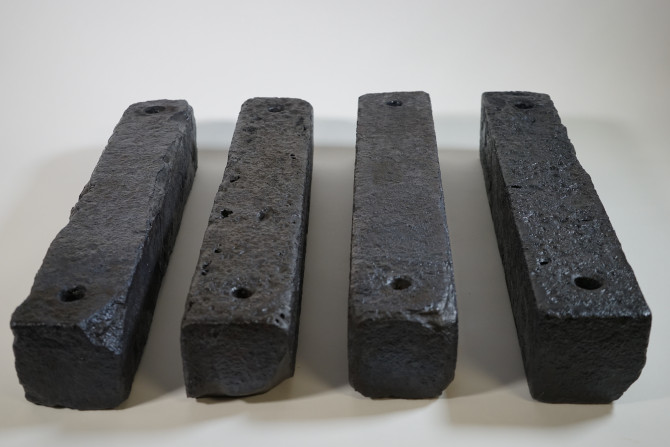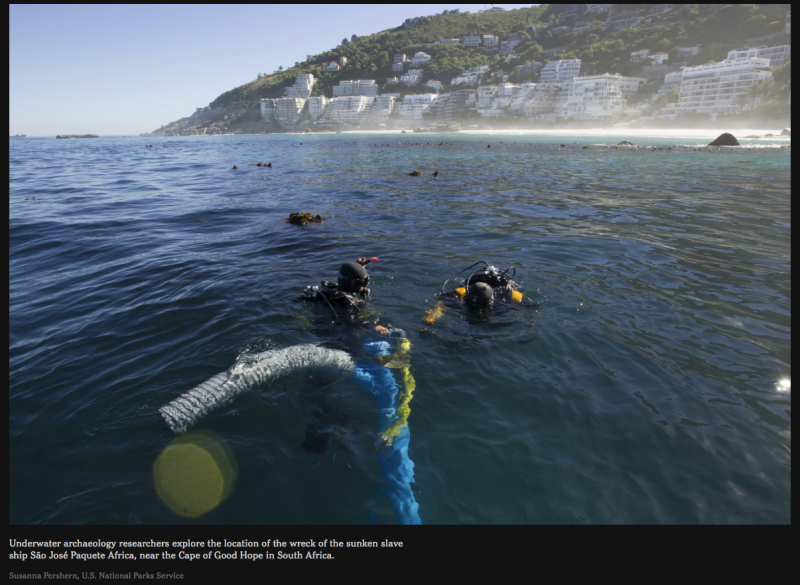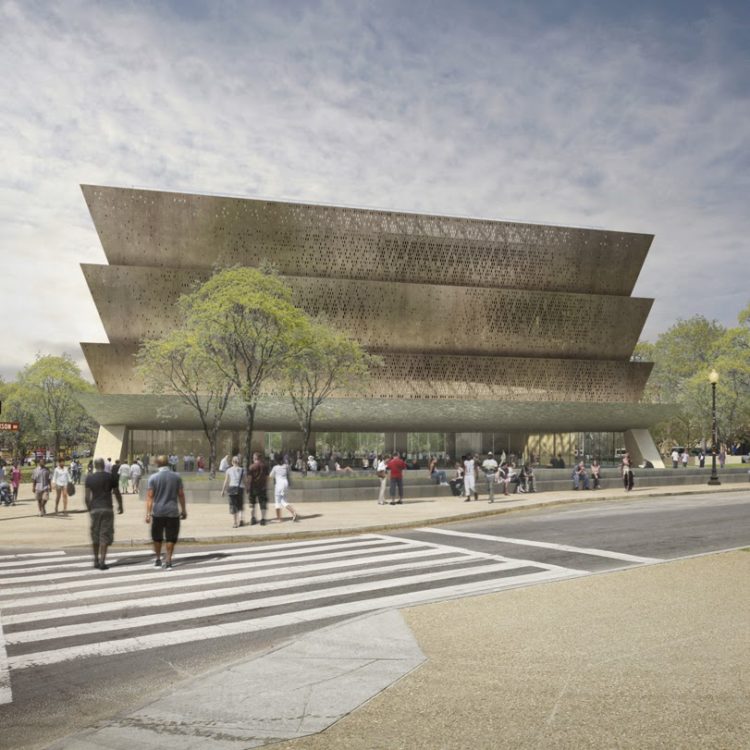Paul Gardullo lifted an iron ballast from a Portuguese slave ship that sank in 1794 out of a crate Wednesday morning and hefted its weight in his hands.

Ballast blocks from the Saõ José slave ship, which sank in December of 1794 off the coast of South Africa. The Slave Wrecks Project
“Anytime I come into contact with the objects from the São José, it’s an incredibly moving experience,” said the curator of the Smithsonian’s National Museum of African American History and Culture. Artifacts from the São José–Paquete de Africa arrived Wednesday at the museum’s storage facility after a research-and-recovery project that’s been going on since 2010.
The long, rectangular ballasts, used to hold the ship down, offset the weight of its human cargo and kept it balanced in the water as it carried 512 enslaved Mozambicans across the sea.
“In some ways, [they] stand, in the case of this particular ship, for the people who were enslaved on board,” Gardullo said. “This ballast that’s here with us … is incredibly important … because of its symbolic and almost spiritual status of standing in for human beings. It’s our job to recalculate the weight of this iron, not as slavers did, but according to a new moral compass—one that hopes to make the mute iron speak for the souls of those lost on board.”

Underwater archeologists explore the site where the slaver went down off the coast of Cape Town, South Africa.
The São José sank in turbulent waters in December of 1794, so near to the shores of Cape Town, South Africa, that the vessel was able to signal for help. The captain, crew and about half of the captives were rescued, but 212 Mozambicans drowned. The survivors were resold into slavery in the Western Cape. Some of the ballasts from the vessel are among artifacts that are being loaned to NMAAHC for a decade. Researchers also found the remnants of shackles. This is the first historically documented shipwreck with enslaved Africans aboard….
The Smithsonian’s [Director Lonnie] Bunch said that the artifacts will remind people that the effects of slavery still exist in everything, from the way race relations have played out in America to the fact that the economic engine for almost every nation in the world was the slave trade. It’s a global story, Bunch said, but he wants the exhibition to have a special message for African Americans.

The National Museum of African American History and Culture opens on the National Mall in Washington, DC, in a grand ceremony on September 24, 2016.
“The key here is I want to help people overcome any fear, any stigma, any sense that ‘I’m a little embarrassed that my ancestors were enslaved,’” Bunch said. “When I walked down the ramp that they walked down and … saw that beautiful ocean … I was trying to imagine what it was like to basically look back and realize you’re never going to see your land again, but you’ve got to keep moving forward.”
Bunch added: “That notion of ‘I wish I was as strong as my enslaved ancestors’ is what I hope a lot of people will get out of this.”
The artifacts from the São José will be featured at NMAAHC in the exhibition “Slavery and Freedom” when it opens Sept. 24, 2016, which coincides with South Africa’s celebration of Heritage Day.
Read the full story here.
More Breaking News here.












Comments Are Welcome
Note: We moderate submissions in order to create a space for meaningful dialogue, a space where museum visitors – adults and youth –– can exchange informed, thoughtful, and relevant comments that add value to our exhibits.
Racial slurs, personal attacks, obscenity, profanity, and SHOUTING do not meet the above standard. Such comments are posted in the exhibit Hateful Speech. Commercial promotions, impersonations, and incoherent comments likewise fail to meet our goals, so will not be posted. Submissions longer than 120 words will be shortened.
See our full Comments Policy here.